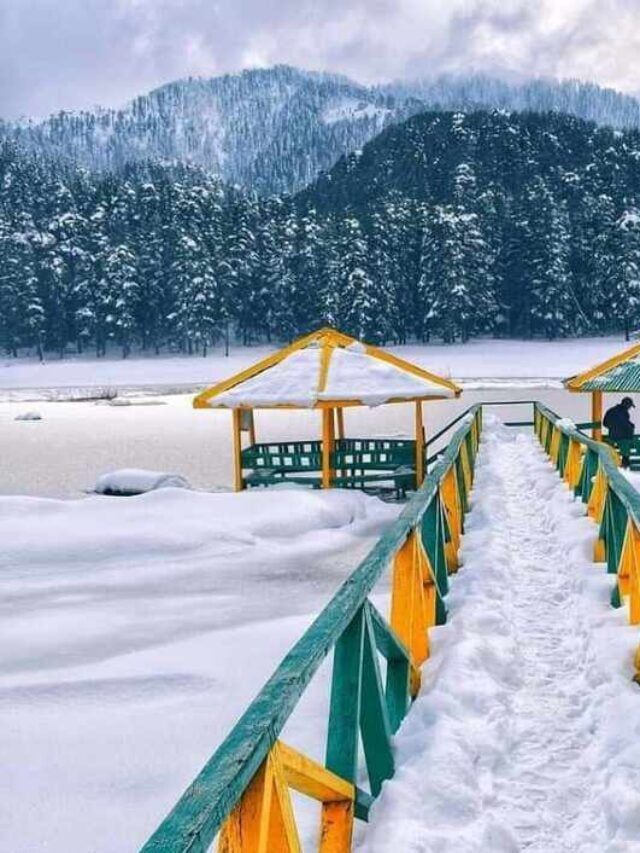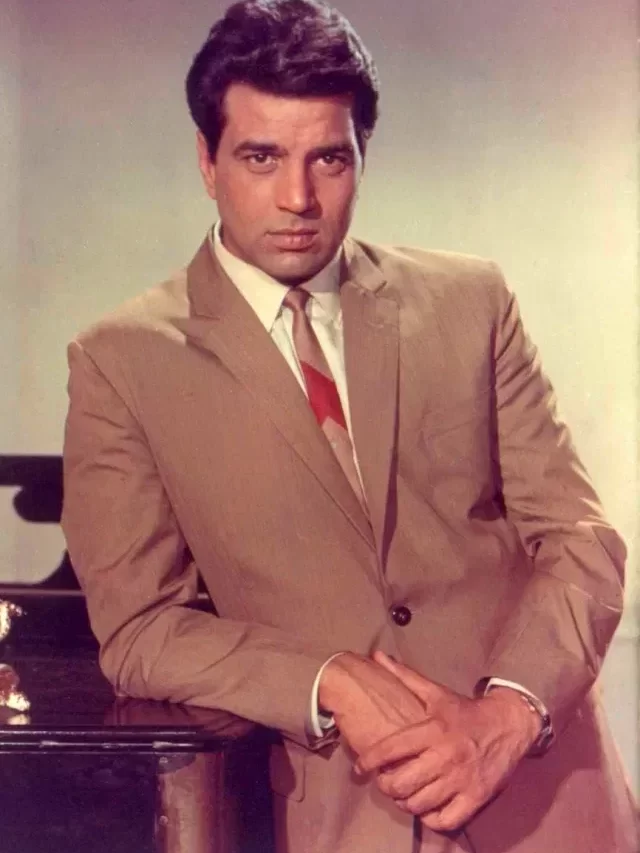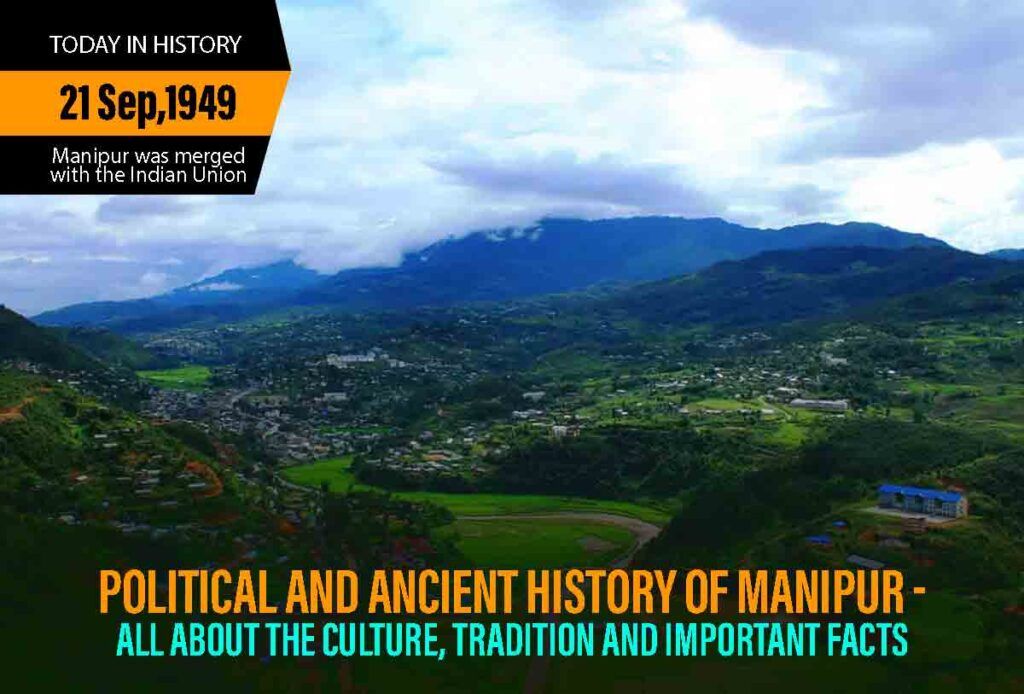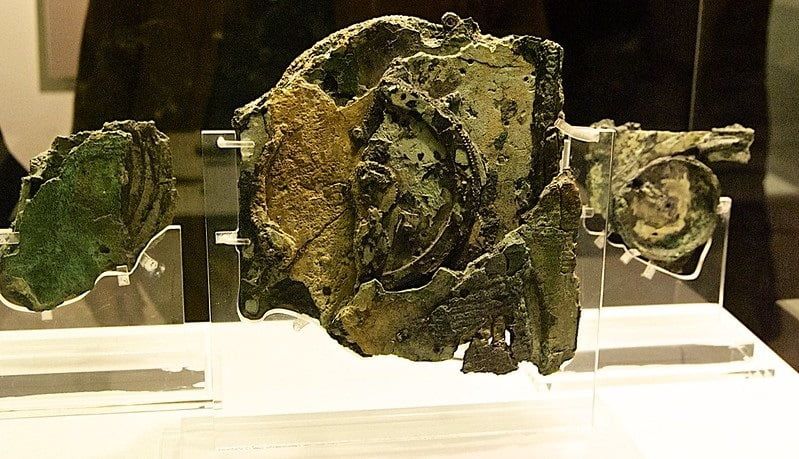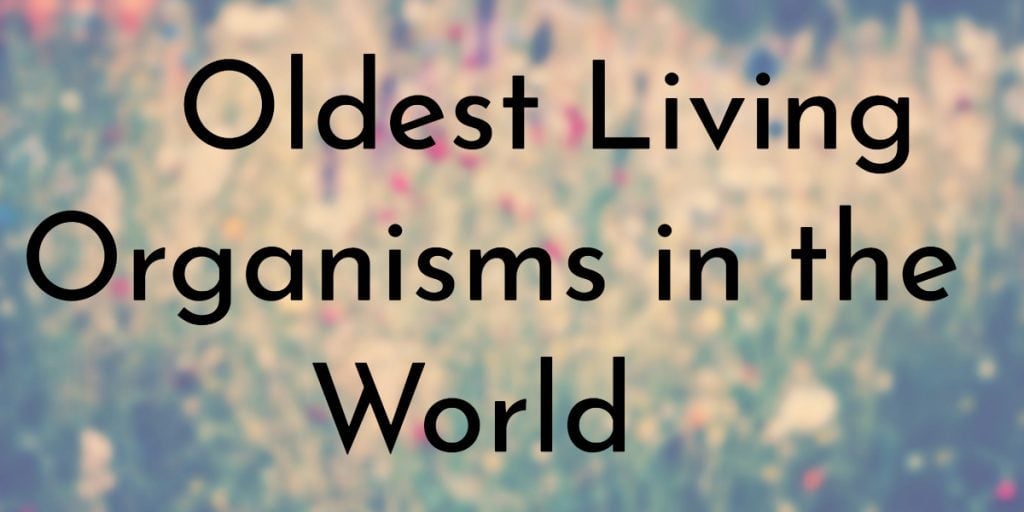The culturally rich state of India, Manipur, has a long history of its own. While this place tops the list of the most beautiful northeastern state of India, the ancient history of Manipur was full of conflicts and wars which left a mark on the charming beauty of Manipur. So, what fueled such conflicts and insurgency? Even after such conflicts, why Manipur is known as jewel of India? What are the important facts about Manipur? This article has it all and it will take you on a journey into the ancient history of the culture and tradition of Manipur which will help us grasp the political history of Manipur better.
The Merge Of Manipur With The Indian Union
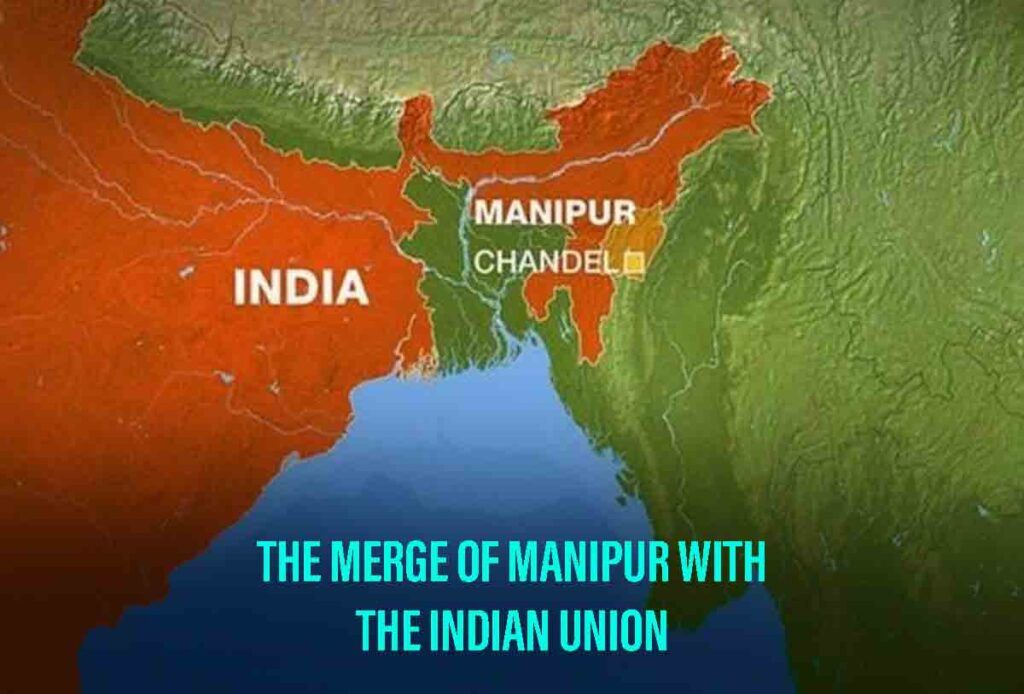
On 21st September 1949, the Governor General of India and the Maharaja of Manipur signed a Merger Agreement in Shillong and as a result, Manipur was merged with the Indian Union. But, internal conflicts erupted in the state after the locals and tribals started raising voices against the system. They demanded separation and independence from India, on account of the fact that the merging was performed under duress. This event of mass protests and conflicts with the State Government is still being continued in Manipur.
Why Manipur Is Known As Jewel Of India?
Do you know why Manipur is known as jewel of India? Who was the person behind nicknaming Manipur the ‘Land of Jewels’? Described by Pandit Jawaharlal Nehru as the ‘Jewel of India’, Manipur has been blessed with immense natural beauty which makes it one of the top visited places in India.
Manipur is surrounded by nine hills that add to the exotic beauty of the place. An oval-shaped valley at the centre and a naturally made jewel also bear a significant contribution to the nickname.
Ancient History Of Manipur
The ancient history of Manipur can be traced back to 1405-1359 BC. Tang, a ruler of a tribe named Qi, inhabited present-day China in 1405 BC. Tang later found the Tang-Shang dynasty which later was settled in the land of Manipur. He then married Sinbee Leima and later established his kingdom in Manipur in 1445 BC.
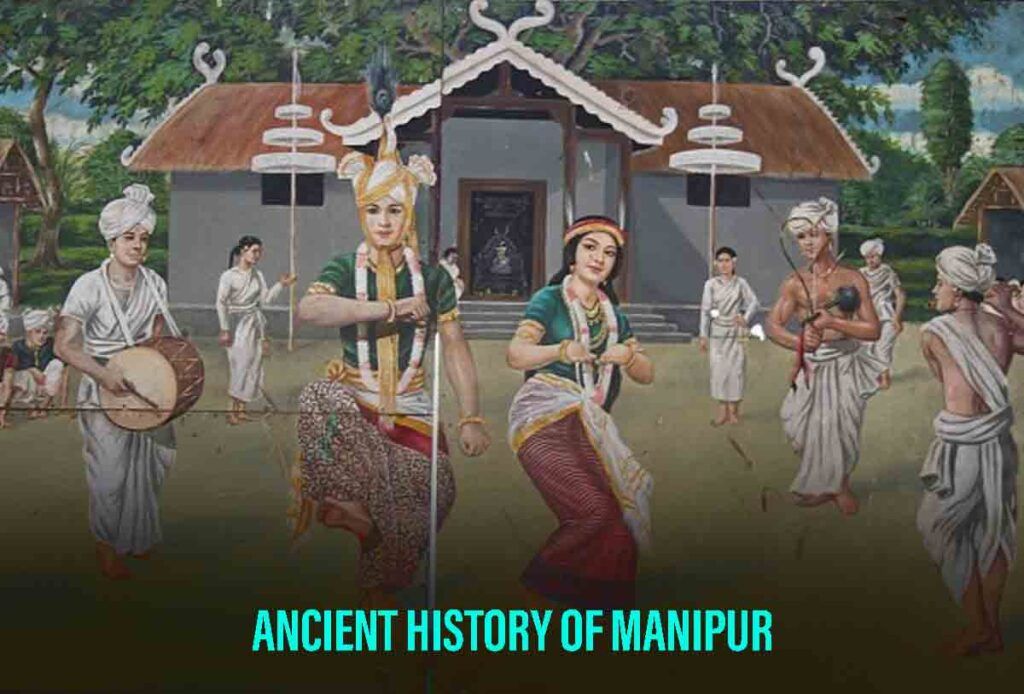
Soon after his son Kangba was born, the Mei-tei kingdom was established. After his father’s death, Kangba ascended the throne. Later, he and his wife gave birth to a son named Koikoi who, like his father, ascended the throne at a very early age. This event followed the establishment of the Mei-tei calendar, taking the birthday of Koikoi as an auspicious event.
Later, Koikoi was blessed with two sons, of which the youngest was seated on the throne by his father. He also had two sons, and as history repeats itself, the youngest of them was made the King. Since then, history continued and various rulers ruled the region for decades.
Political History Of Manipur
The political history of Manipur is full of instability and conflicts between the locals and the State Government. Though Manipur merged with India in 1949, the political history of Manipur can be traced back to one year before in 1948, when the ‘Land of Jewels’ held its first election following its own constitution.
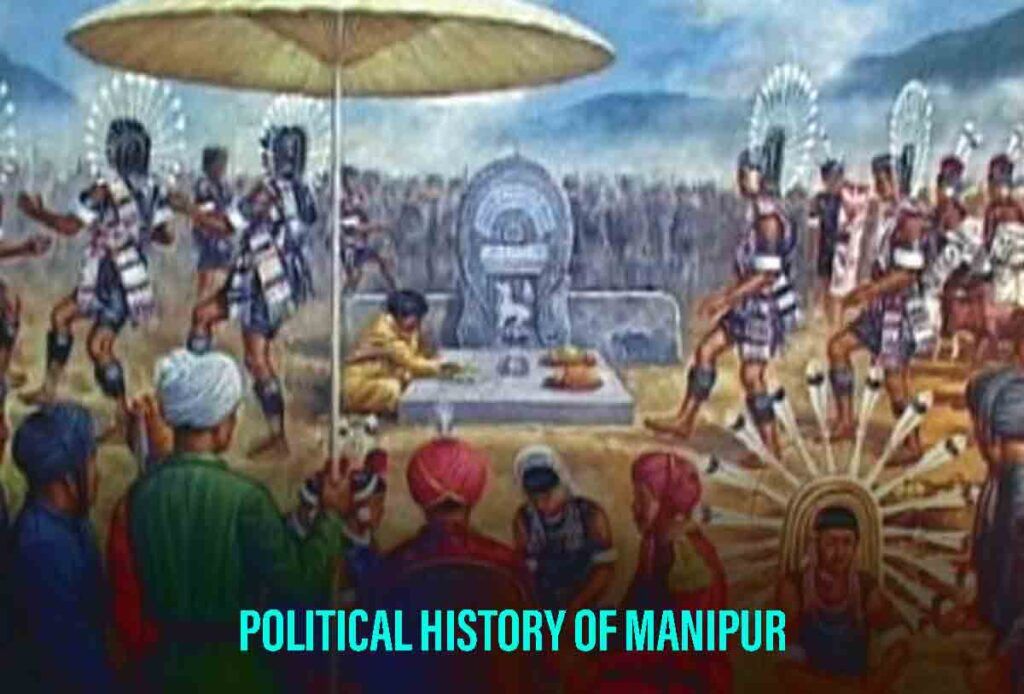
While no party could manage to win an absolute majority in the state, a coalition government was formed. Soon Manipur held its next elections in 1957 which continued till 1972. After 1972, when Manipur was granted the status of a state, the region held its next elections in 1972 involving 60 seats of the State Assembly, which included the Mei-tei and the remaining tribals of the region.
But, certain conflicts and battles between the Mei-tei and the hilly tribes had been hindering the development of these regions. This conflict became more pronounced during the elections as different political parties dug up several conflicts to gain seats in the region. The political instability of Manipur still continues. The local people have started demanding independence from India as they feel that the merging of Manipur with India was ‘forced’. Narendra Modi-led BJP now rules over the state.
When Manipur Became A Part Of India – Formation Of Manipur State
The ancient history of Manipur hints at the fact that Manipur was always a princely state. But, conflicts erupted between Manipur and Burma when the former attacked the latter but could not manage to take over the Burmese lands. Soon, they decided to seek help from the British to gain control over Burma. Though the British agreed to help Manipur, they had other plans.
Soon, the ruler of the then Manipur realised that the British were trying to gain control over the state, which ultimately resulted in conflicts between the two. But, when Britishers left India, Maharaja Budhachandra, in the year 1947, signed the Instrument of Accession and finally joined India.
Two years later in 1949, a Merger Agreement was signed by the ruler of Manipur joining India which gave Manipur the status of a part-C state. Later, in 1956, Manipur was made into a Union Territory. Finally, in 1972, Manipur was granted statehood by the North Eastern Areas Act, 1971.
But, later conflicts started brewing up in this region as the locals started raising their voices against the merging of Manipur with India. They opinionated that the merger was ‘forced’ and that they were not involved in discussions before signing the agreement. This has led to long insurgency and conflicts in the region leading to a huge number of deaths.
Culture And Tradition Of Manipur
The northeastern state of India, Manipur, boasts of its vibrant and rich cultural history. The vibrant culture and tradition of Manipur attract people from all over the globe. One among the many important facts about Manipur, the mostly unexplored land, is that it reflects an amalgamation of Korean, central Indian, and northeast Indian cultures.

Inhibited by different tribes such as Kuki, Naga, Pangal, and Mizo, there is no shortage of art and culture in this state. Though the Mei-tei tribe enjoys superiority here, other communities are also present. The people have retained the culture and tradition of Manipur with beauty and grace which is the main reason for the cultural vibrancy of this state.
Music, dance, handicrafts, and local cuisines have made Manipur a huge tourist attraction. And how can we forget the colourful festivals of this state? Starting from the Kut festival, Lai-Haraoba, Gang-Ngai, and Yaoshang, Manipur is rich in colours and reflects love and peace.
Important Facts About Manipur
Manipur was merged with the Indian Union in the year 1949 which led to mass conflicts and insurgency in the region. Some of the interesting and important facts about Manipur are:
- One of the most important facts about Manipur is that many consider the region as the land of Gandharvas. While many believe in this myth, others simply reject it saying, it has got no historical base.
- After knowing why Manipur is known as Jewel of India, it’s interesting to learn that though Nongda Lairen Pakhangba was the first King of Manipur who established his kingdom in 33 AD, Manipur boasts its connection with Mahabharata as well. Chhitrangada, one of the princesses of Manipur, was the wife of Pandava Prince, Arjun.
- Manipur is credited with introducing the game of ‘Polo’. The land of Manipur houses the world’s oldest Polo ground at Imphal’s Mapal Kangjeibung.
- Did you know that one needs to have a special permit to visit Manipur? One needs an Inner Line Permit (ILP) to visit the protected areas of this region, which is granted by the Manipur Government.
- The chief minister of Manipur is N. Biren Singh and the governor is La Ganesan.
- The official language of Manipur is Meitei or the Manipuri language.
- Sangai is the state animal of Manipur. The state bird is Nongyin and the state flower is Shirui Lily.
Conclusion
The long history of conflicts and insurgency led the Indian Government to name this region a disturbed area from 1980 to 2004. The Indian Government has allowed the military extraordinary powers to maintain law and order in the state. But, this has led to more conflicts between the locals and the State Government. Later, in 2004, the government lifted the disturbed status after a violent attack on women.
According to reports, the number of deaths and murders has reduced significantly in the state. The conflicts among the local people have also lessened to a much larger extent. But, there is a long way to go for Manipur.
For more related articles, Visit Discover
